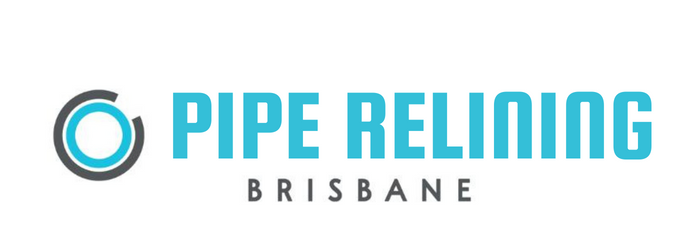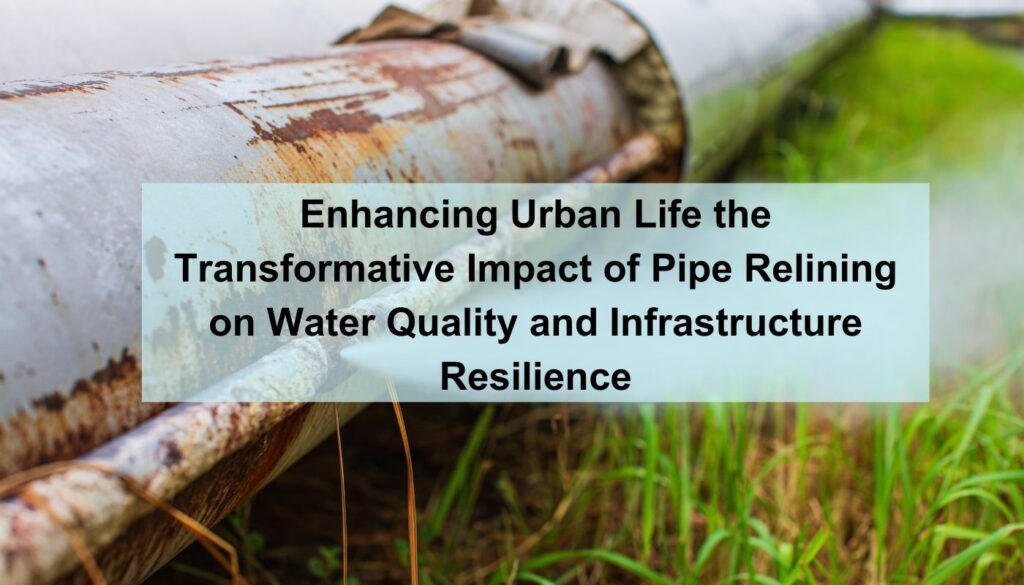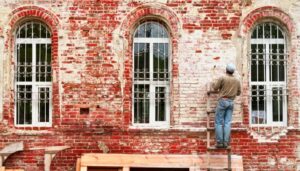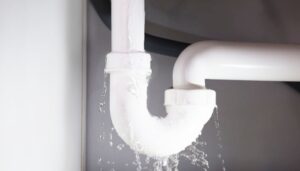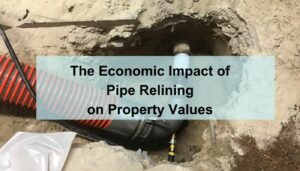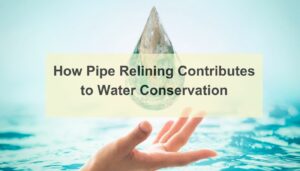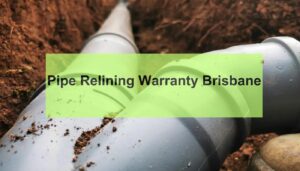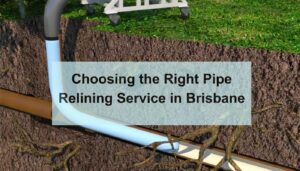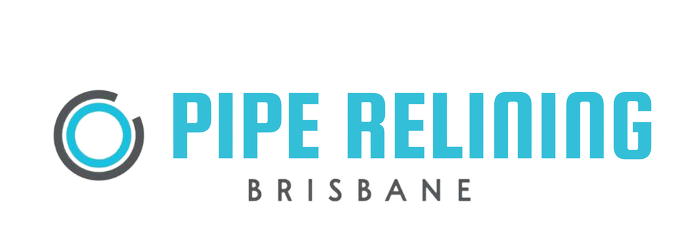In the intricate web of urban infrastructure, the health of water systems plays a pivotal role in ensuring public well-being and environmental sustainability. As cities grow and environmental pressures increase, the challenge of maintaining, repairing, and upgrading these essential systems, including both water supply and drainage systems, has never been more critical. This is particularly true for stormwater management, where many factors, including increased urbanization and the extreme weather conditions of the winter months, exacerbate the strain on infrastructure. Traditional methods of pipe repair and replacement are not only disruptive and costly but also pose significant environmental risks.
Enter pipe relining, a modern, innovative solution that promises to revolutionize the way we approach the maintenance of our water infrastructure. By offering a less invasive and more sustainable method of addressing infrastructure weaknesses, pipe relining plays a crucial role in ensuring the resilience of urban water systems against the challenges posed by growth, climate change, and seasonal stresses.Pipe relining, a trenchless rehabilitation method, offers a less invasive alternative to traditional pipe repair techniques.
By creating a new, durable lining within existing pipes, this method effectively repairs damage without the need for extensive excavation. This not only minimizes disruption to daily life and the environment but also enhances the resilience of water infrastructure against future damage. The significance of pipe relining extends beyond its immediate functional benefits; it represents a forward-thinking approach to urban infrastructure management, prioritizing efficiency, sustainability, and public health.
Incorporating advanced data collection and risk analysis into the planning and implementation phases of pipe relining projects is crucial for identifying vulnerable sections of the network, and risk assessment thereby preventing failures that could have significant consequences, including substantial economic losses and environmental damage.
As communities worldwide grapple with the challenges of aging infrastructure, climate change, and increasing water quality standards, the adoption of pipe relining techniques emerges as a beacon of progress. This article delves into the transformative impact of pipe relining on water quality and infrastructure resilience, exploring its benefits, challenges, and the technological innovations driving its success. Through a comprehensive analysis, we aim to shed light on how this method is not just repairing pipes but is laying the groundwork for more resilient, sustainable urban environments.
Future research in this field is essential for developing even more efficient and sustainable relining materials and methods, further reducing the environmental footprint and enhancing the resilience of urban water and drainage systems. The potential for land use and pipe relining to mitigate the consequences of various types of infrastructure failure in urban areas is significant, underscoring the importance of continued innovation and investment in this area.
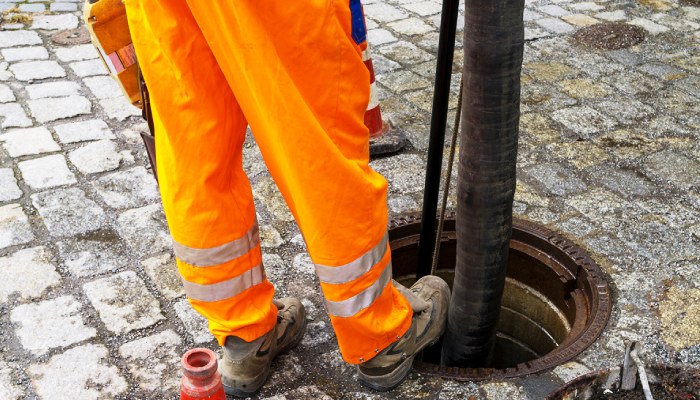
The Basics of Pipe Relining
Pipe relining, a cornerstone of modern infrastructure maintenance, offers a revolutionary approach to extending the life and reliability of water systems without the need for extensive excavation. This section explores the fundamentals of pipe relining, its methods, and materials, providing a foundation of knowledge for understanding and maximizing its impact on water quality and infrastructure resilience.
What is Pipe Relining?
Pipe relining is a method that repairs damaged pipes by inserting a new lining inside existing ones, effectively creating a “pipe within a pipe.” This technique restores pipe integrity with minimal disruption, offering an eco-friendly alternative to traditional excavation. It’s particularly adept at repairing underground PVC pipe without digging, significantly reducing both the environmental impact and the cost associated with pipe repairs.
Methods of Pipe Relining
Pipe relining encompasses several techniques, each suited to different types of damage and pipe materials. The most common method, Cured-in-Place Pipe (CIPP) relining, involves inserting a resin-saturated liner into the damaged pipe, which is then cured using heat, ultraviolet light, or ambient conditions to form a rigid, seamless pipe. Other methods include slip lining, where a new, smaller pipe is inserted into the old one, and spray lining, where a coating is applied internally to seal leaks and restore pipe integrity.
Materials Used
The materials used in pipe relining vary according to the method and specific project requirements. For CIPP, a felt or fiberglass liner is impregnated with a thermosetting resin, typically polyester, vinyl ester, or epoxy. These materials are chosen for their durability, corrosion resistance, and ability to conform to the host pipe’s shape, ensuring they maintain a tight, seamless fit.
Comparative Analysis with Traditional Pipe Replacement
Compared to traditional pipe replacement, pipe relining offers several advantages. It is less invasive, requiring minimal digging and thus preserving landscapes and urban infrastructure. The process is also faster, often completed in a fraction of the time required for excavation and replacement. Economically, relining can be more cost-effective, saving on labor, restoration, and indirect costs associated with traditional methods.

Environmental and Health Implications
The integrity of water infrastructure is a cornerstone of public health and environmental stewardship. As aging pipes deteriorate, they become susceptible to leaks and breaks, leading to significant water loss and potential contamination of drinking water supplies. Traditional methods to address these issues often involve extensive excavation, which can disrupt ecosystems, contribute to soil erosion, and lead to significant disturbances in daily urban life.
Pipe relining emerges as a critical solution, addressing these challenges head-on with notable implications for both environmental sustainability and public health. By offering a trenchless alternative to traditional excavation, pipe relining minimizes flood risk and environmental disruption and preserves the integrity of landscapes while effectively combating the risks associated with deteriorating water infrastructure.
Protecting Water Quality
Deteriorating water pipes pose a significant risk to water quality, with cracks and breaks allowing contaminants to infiltrate the supply. This contamination can range from bacteria and viruses to heavy metals and chemical pollutants, posing serious health risks to communities. Pipe relining seals these entry points, effectively preventing contamination and safeguarding water quality. By creating a seamless, corrosion-resistant barrier inside existing pipes, relining ensures that water delivered to homes and businesses is clean and safe for consumption.
Reducing Environmental Impact
Traditional pipe repair and replacement methods often involve extensive excavation, disrupting ecosystems, and contributing to soil erosion and habitat destruction. In contrast, pipe relining minimizes environmental disruption by eliminating the need for large-scale digging. This trenchless technology not only preserves landscapes and reduces the carbon footprint associated with construction activities but also significantly cuts down on the amount of waste sent to landfills. Old pipes are repaired in place rather than removed and discarded, contributing to a more sustainable approach to infrastructure maintenance.
Conserving Water Resources
Water loss due to leaks in aging infrastructure is a critical issue, with billions of gallons of water wasted each year. Pipe relining addresses this challenge by sealing leaks and restoring the integrity of water pipes, significantly reducing water loss. This conservation of water resources is vital in regions facing water scarcity and is an essential component of sustainable water management practices.
Enhancing Public Health
The direct link between water quality and public health cannot be overstated. By ensuring the integrity of water distribution systems, pipe relining plays a crucial role in preventing waterborne diseases and protecting communities from exposure to harmful contaminants. Improved water quality also supports healthier ecosystems, which are essential for the overall well-being of the planet and its inhabitants.

Economic Considerations
The economic implications of pipe relining versus traditional pipe replacement are significant, influencing key components of the decision-making process for municipalities, utility companies, and property owners. The cost-effectiveness, long-term savings, and broader economic benefits of pipe relining underscore its value as an investment in infrastructure resilience.
Cost-Effectiveness
Initial costs for pipe relining can be lower than traditional replacement, especially when considering the indirect costs associated with excavation-based methods. These indirect costs include road closures, traffic disruption, landscape restoration, and potential damage to surrounding infrastructure. Pipe relining’s trenchless nature significantly reduces these expenses, making it a more cost-effective solution for repairing damaged pipes.
Long-Term Savings
The durability and longevity of relined pipes lead to substantial long-term savings. Relined pipes can last as long as new pipes, often exceeding 50 years, reducing the need for frequent repairs or replacements. This extended lifespan, combined with reduced maintenance costs, makes pipe relining a financially sound choice over the long term. Additionally, the efficiency gains from improved water flow and reduced leakage translate into lower operational costs for water utilities, further enhancing the economic benefits.
Economic Benefits Beyond Direct Costs
The economic advantages of pipe relining extend beyond direct cost savings. By minimizing disruption to businesses and daily life, relining supports local economies and reduces the economic impact associated with construction projects. Furthermore, the environmental benefits of relining, such as reduced water loss and lower carbon emissions, have indirect economic implications. Conserving water resources can defer the need for new water supply projects, and reducing greenhouse gas emissions aligns with broader goals of climate change mitigation, potentially avoiding future costs associated with environmental degradation.

Enhancing Infrastructure Resilience
In an era where climate change and urbanization pose increasing challenges to infrastructure systems, enhancing resilience is paramount. Pipe relining stands at the forefront of this effort, offering a robust solution to strengthen water infrastructure against a myriad of threats, from natural disasters to the daily wear and tear of urban life. This section delves into how pipe relining contributes to infrastructure resilience, ensuring communities remain safe, functional, and sustainable.
Adapting to Climate Change
Climate change introduces new variables and stresses to water infrastructure, including increased precipitation, flooding, and sea-level rise, all of which can exacerbate pipe damage. Pipe relining fortifies water systems, making them more resilient to such environmental changes. By sealing existing pipes from within, relining prevents infiltration and exfiltration, which can be significantly worsened by climate-induced weather patterns. This internal barrier also protects against corrosion and root intrusion, common issues that are expected to increase with changing climate conditions.
Disaster Preparedness and Recovery
Disasters, whether natural or man-made, pose significant risks to water infrastructure. Earthquakes, for example, can cause catastrophic damage to pipelines, leading to prolonged service interruptions. Pipe relining enhances the seismic resilience of pipelines, allowing them to withstand greater stress and deformation without failing. This not only reduces the likelihood of service disruptions during a disaster but also speeds up recovery efforts by ensuring that water systems remain largely intact and functional.
Longevity and Durability
One of the key aspects of resilience is the ability of infrastructure to endure and maintain functionality over time. Pipe relining significantly extends the lifespan of water pipes, with relined pipes expected to last at least 50 years. This durability is crucial for minimizing the need for frequent repairs and replacements, thereby ensuring continuous service and reducing vulnerability to infrastructure failures. Moreover, the materials used in relining, such as epoxy and vinyl ester, are resistant to chemical and biological degradation, further enhancing the longevity of relined pipes.
Supporting Urban Expansion
As cities expand and populations grow, the demand on water infrastructure intensifies. Pipe relining offers a scalable solution to meet this increased demand without the need for extensive new construction. By restoring and enhancing the capacity of existing pipes, relining supports urban expansion and development, ensuring that water systems can accommodate future growth. This adaptability is essential for resilience, allowing cities to evolve and thrive in the face of changing demographics and urban landscapes.
Economic and Environmental Synergy
Enhancing infrastructure resilience through pipe relining also presents economic and environmental benefits. By preventing water loss and reducing the need for energy-intensive water treatment, relining contributes to more sustainable and cost-effective water management practices. This synergy between resilience, economic efficiency, and environmental sustainability underscores the holistic value and function of pipe relining in building robust, future-proof water systems.
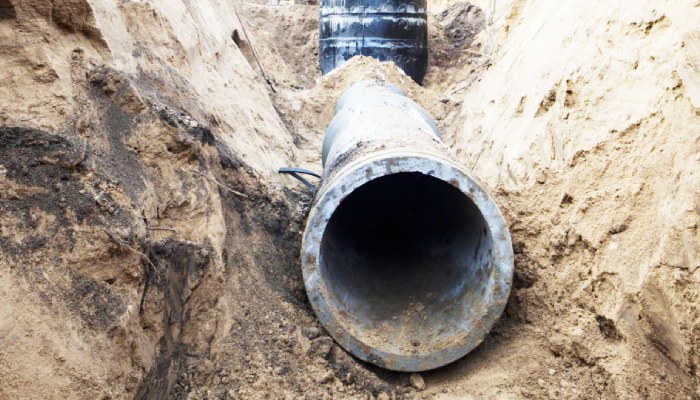
Technological Innovations in Pipe Relining
The field of pipe relining is rapidly evolving, driven by technological innovations that enhance efficiency, effectiveness, performance, and environmental sustainability. These advancements are setting new standards in infrastructure maintenance, offering promising solutions to some of the most pressing challenges facing urban water systems today.
Robotics and Automation
Robotics, data, and automation are revolutionizing pipe relining, making the process more precise, less invasive, and more cost-effective. Robotic cutters and cameras facilitate accurate inspections and repairs within pipes, minimizing human error and the need for excavation. These technologies allow for targeted repairs and real-time monitoring of pipe conditions, ensuring that relining efforts are both effective and efficient.
Advanced Materials
The development of new materials has significantly improved the performance and durability of relined pipes. Epoxy resins with enhanced chemical and physical properties ensure that relined pipes are more resistant to corrosion, abrasion, and pressure. These materials not only extend the lifespan of water infrastructure but also contribute to better water quality by preventing contamination.
Cured-in-Place Pipe (CIPP) Technology
CIPP technology has seen significant advancements, with new curing methods that reduce environmental impact and improve safety. UV light curing, for example, offers a faster, more energy-efficient alternative to traditional hot water or steam curing. This method reduces the carbon footprint of relining projects and eliminates the risk of styrene release, a concern with some resin systems.
Trenchless Technology Integration
The integration of trenchless technology with pipe relining is a game-changer for infrastructure maintenance. Techniques such as horizontal directional drilling (HDD) and microtunneling are being combined with relining to address more complex and challenging repairs. This integration allows for the rehabilitation of pipes in locations that were previously inaccessible or too disruptive to service, further expanding the applicability and impact of pipe relining.
Challenges and Considerations
While pipe relining offers a compelling solution for extending the well system of life and improving the resilience and performance of water infrastructure, it its implementation is not without its challenges and considerations. Understanding these hurdles is crucial for planning, executing, and maximizing the benefits of pipe relining projects.
Technical Limitations
One of the primary challenges of pipe relining is its technical limitations. Not all pipes are suitable candidates for relining; in many cases, factors, such as pipe diameter, material, and the extent of damage can limit the applicability of this method. Severely collapsed or misaligned pipes may require excavation and replacement, rather than relining. Additionally, navigating bends and junctions in the pipe network can be complex, requiring specialized solutions and expertise.
Environmental and Health Concerns
The materials used in some relining processes, particularly certain resins, can raise environmental and health concerns. For example, the styrene used in some CIPP installations has been flagged for its potential to release significant amounts of volatile organic compounds (VOCs) during the curing process. Ensuring worker safety and minimizing environmental impact requires careful selection, analysis and evaluation of materials, adherence to safety protocols, and, in some cases, community notification and engagement.
Regulatory and Compliance Issues
Navigating the regulatory landscape is another challenge for pipe relining projects. Different jurisdictions may have varying standards and requirements for water infrastructure repair and rehabilitation. Compliance with these regulations, including environmental protection standards and building codes, is essential. This can involve extensive documentation, testing, and certification processes, adding layers of complexity to relining projects.
Cost and Budgeting
While pipe relining is often more cost-effective than traditional replacement, initial costs can still be significant, particularly for large-scale or complex projects. Budget constraints and other factors may limit the scope of relining projects or necessitate phased implementations. Accurate cost-benefit analyses, considering both short-term expenditures and long-term savings, are vital for identifying and securing funding and support for relining initiatives.
Public Perception and Acceptance
Finally, public perception and acceptance can pose challenges. Disruptions, even minimal, can lead to public inconvenience and dissatisfaction. Clear communication about the benefits of pipe relining, the process involved, and the expected outcomes is crucial for gaining public support. This includes addressing any concerns about water quality and safety post-relining.

Case Studies and Success Stories
City of Philadelphia, USA
The Philadelphia Water Department embarked on an ambitious pipe relining project to address its aging water infrastructure. Utilizing CIPP technology, the city successfully relined over 100 miles of water mains, significantly reducing water loss and improving water quality. The project demonstrated the effectiveness greatest value of pipe relining in enhancing the resilience and performance of urban water systems, with minimal disruption to the city’s bustling streets.
Sydney Water, Australia
Sydney Water’s pipe relining program stands as a testament to the method system’s environmental and economic benefits. Faced with the challenge of aging pipes and increasing water demand, Sydney Water adopted a proactive approach, relining pipes to prevent leaks and extend their lifespan. The program has saved millions of gallons of water and reduced the need for costly infrastructure expansions.
Singapore’s PUB Water Agency
Singapore, known for its innovative approach to urban drainage and water management, implemented a comprehensive pipe relining project to upgrade its sewerage system. The project utilized advanced UV-cured CIPP technology, minimizing environmental impact and ensuring the project’s success in a densely populated urban environment. This initiative has been crucial in maintaining the city-state’s high standards of sanitation and water quality.
These case studies highlight the global applicability and success of pipe relining in addressing the challenges of aging water infrastructure. By identifying and overcoming technical, regulatory, land, and financial hurdles, these projects have enhanced the resilience, efficiency, and sustainability of water systems, serving as inspiring models for communities worldwide.
Environmental Conservation and Sustainability
The adoption, evaluation and implementation of pipe relining technologies not only addresses the immediate concerns of aging water infrastructure but also plays a significant role in broader environmental conservation and sustainability efforts. This section explores how pipe relining contributes to sustainable water management, reduces environmental impact, and aligns with global sustainability goals.
Sustainable Water Management
Pipe relining is instrumental in combating water loss, a critical issue for many communities worldwide. By sealing leaks and preventing pipe breakages, relining significantly reduces water loss from distribution systems. This conservation is vital in regions facing water scarcity, helping to secure water supplies for future generations. Moreover, efficient water distribution systems, free from leaks and breaks, require less energy for water pumping and wastewater treatment alone, further contributing to resource conservation and energy efficiency.
Reducing Environmental Impact
Traditional pipe repair and replacement methods often involve extensive excavation, leading to significant environmental disruption. Pipe relining, by contrast, offers a trenchless rehabilitation option that minimizes soil disturbance, preserves existing landscapes, and reduces the carbon footprint associated with construction activities. This approach not only protects local ecosystems but also supports urban green spaces, which are crucial for biodiversity, air quality, and community well-being.
Contribution to Environmental Goals
Pipe relining aligns with several global environmental goals, including those outlined in the United Nations Sustainable Development Goals (SDGs). Specifically, it contributes to SDG 6 (Clean Water and Sanitation) by improving water quality and reducing water loss, and SDG 11 (Sustainable Cities and Communities) by promoting resilient and green infrastructure, and reducing environmental impact of land use. Furthermore, by minimizing the need for new materials and reducing energy consumption, pipe relining supports SDG 12 (Responsible Consumption and Production), emphasizing the importance of efficient resource use and circular economy principles.
Enhancing Climate Resilience
As climate change intensifies, the resilience of water infrastructure becomes increasingly critical. Pipe relining enhances the climate resilience of water systems, making them more robust against extreme weather events, such as floods and droughts, which are expected to become more frequent and severe. By ensuring the integrity and reliability of water distribution networks, relining helps communities adapt to climate variability and protect vital water resources.
Fostering Innovation for Sustainability
The ongoing development of pipe relining technologies, including the use of more sustainable materials and methods, reflects a commitment to environmental innovation. Research and development efforts are continuously seeking ways to reduce the environmental impact of relining processes further, exploring eco-friendly resins, and improving curing methods to improve resilience and decrease energy use and emissions. These innovations not only enhance the sustainability of pipe relining itself but also contribute to the broader field of sustainable infrastructure maintenance.
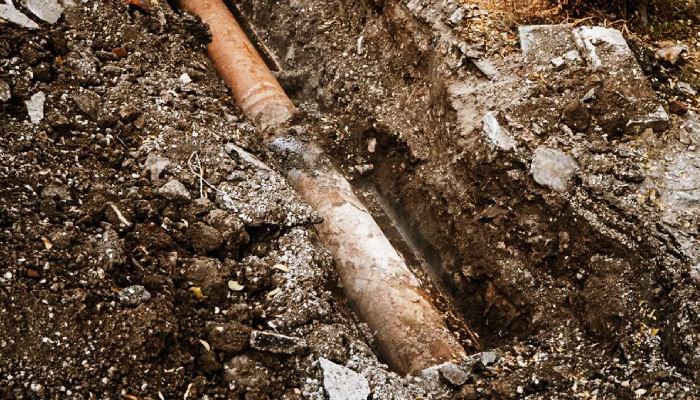
Conclusion
In the quest to modernize aging water infrastructure and adapt to the evolving demands of urban environments, pipe relining emerges as a pivotal solution. This innovative approach not only addresses the immediate needs for repair and resilience but also aligns with broader objectives of sustainability, efficiency, and public health protection. As explored through the intricacies of its application, from technical methodologies to the challenges and successes encountered across the globe, pipe relining stands out as a testament to the power of modern engineering in service of community well-being.
The environmental and health implications of adopting pipe relining are profound. By safeguarding water quality and minimizing ecological disruption, this method underscores the interconnectedness of green infrastructure, resilience and environmental stewardship. Economic considerations further reveal the cost-effectiveness of pipe relining, offering municipalities and stakeholders a financially viable alternative to traditional pipe replacement. The advancements in technology, from robotics to advanced materials, propel pipe relining into the forefront of green infrastructure and maintenance, ensuring that water systems can withstand the tests of time and nature.
However, the journey of integrating pipe relining into the fabric of urban infrastructure management is not devoid of hurdles. Technical limitations, regulatory landscapes, and the imperative for public engagement and acceptance present a complex matrix of challenges to navigate. Yet, the case studies from Philadelphia, Sydney, and Singapore illuminate key components of the path forward, showcasing the tangible benefits of resilience, efficiency, and sustainability achieved through pipe relining projects in urban populations.
In conclusion, the impact of pipe relining on water quality and infrastructure resilience is a narrative of innovation, adaptation, and foresight. It exemplifies a commitment to preserving the lifelines of our urban populations water systems through methods that are less invasive, more sustainable, and economically advantageous. As cities continue to grow and face the multifaceted challenges of the 21st century, the adoption of pipe relining will undoubtedly play a critical role in ensuring that our water infrastructure is not only preserved but thrives. This approach not only addresses the immediate needs for infrastructure maintenance but also mitigates the potential failure consequences that can significantly disrupt urban life and pose risks to public health and the environment.
In this light, enhancing urban life through the transformative impact of pipe relining on water quality, biodiversity, and infrastructure resilience is not just a technical solution; it is a strategic imperative for the future of urban living, embodying a holistic approach to building resilient, healthy, and sustainable communities. The foresight to invest in and adopt pipe relining technologies reflects a proactive stance towards urban infrastructure management, ensuring that cities are better equipped to handle the challenges of today and tomorrow.
